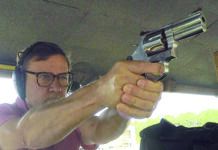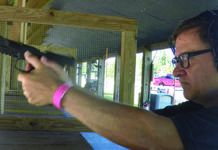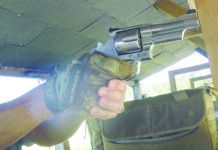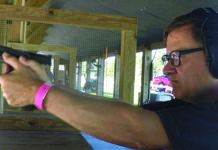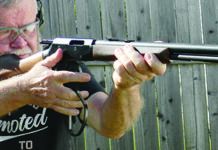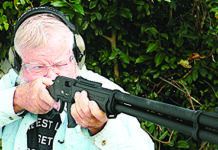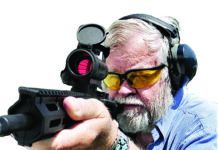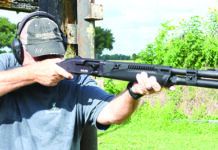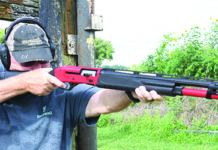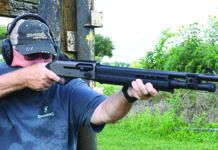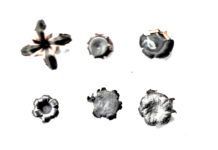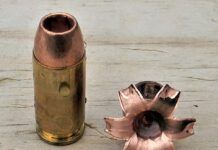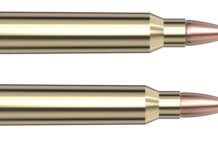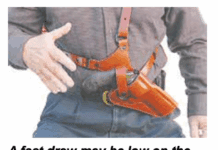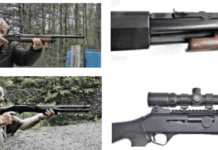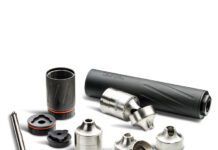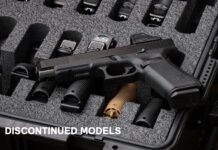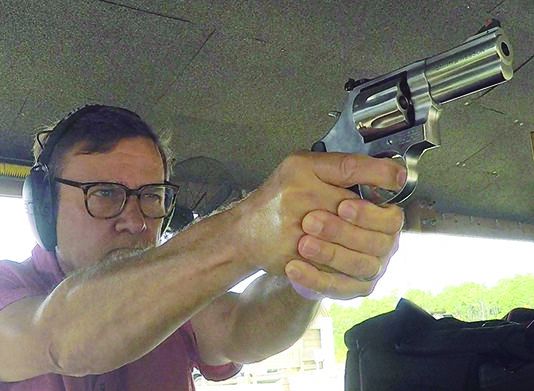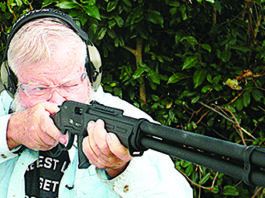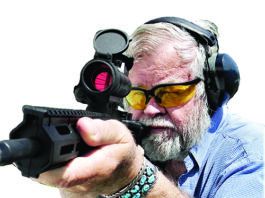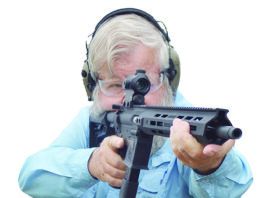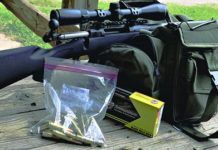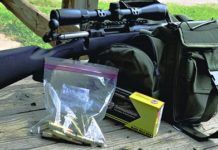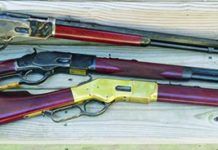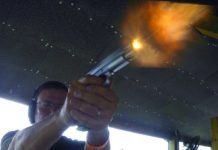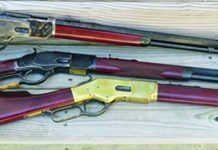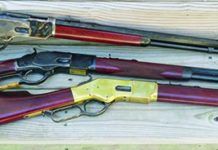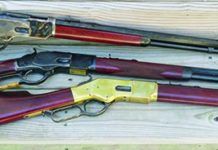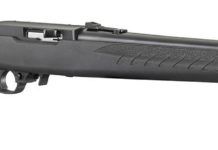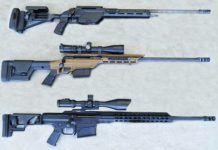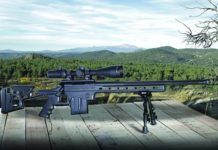Which 308 Bolt-Action Rifles Would We Take to the Woods?
The 308 Winchester is one of our more popular and most versatile cartridges. Accurate, powerful enough for most anything in North America save the largest bears, and affordable, the 308 Win. has a lot going for it. Among the most popular firearms chamberings for this cartridge is the bolt-action rifle, and we recently tested four examples to see which one might make a timely Christmas present for yourself or someone else who would like something long and skinny under the tree.
In some ways, this report was a continuation of the test we ran in the October 2017 issue, which used the Savage Axis, Remington SLP, Remington Varmint rifle, and Browning BAR, all in 308 Winchester. This time, we included a rifle that would be a match for the Remington Varmint rifle previously tested — the Savage Model 12 with bull barrel was the heaviest rifle this round. In the previous feature, the editor noted that none of the rifles seemed to excite the testers. He was correct. This time around was different. This time we got excited and found the rifles are interesting and appropriate to the job at hand.
We really liked one rifle and felt that it was a Best Buy and a great all-round choice. Also, a more-recent version of an existing model was well worth its modest price. Because we are always looking for a low-cost gem, we added a bargain-basement used gun whose specific model we hadn't previously tested in the magazine. The Mossberg Trophy Hunter rifle line (there is also a Savage Trophy Hunter, so don't be confused) has been replaced by the Mossberg Patriot series.
The Savage Model 12FV was the most accurate rifle in the test and received high marks for its smooth action and three-position safety. The only question was, would you be willing to lug this rifle around the woods or bring it to the stand?
Which 308 Bolt-Action Rifles Would We Take to the Woods?
The 308 Winchester is one of our more popular and most versatile cartridges. Accurate, powerful enough for most anything in North America save the largest bears, and affordable, the 308 Win. has a lot going for it. Among the most popular firearms chamberings for this cartridge is the bolt-action rifle, and we recently tested four examples to see which one might make a timely Christmas present for yourself or someone else who would like something long and skinny under the tree.
In some ways, this report was a continuation of the test we ran in the October 2017 issue, which used the Savage Axis, Remington SLP, Remington Varmint rifle, and Browning BAR, all in 308 Winchester. This time, we included a rifle that would be a match for the Remington Varmint rifle previously tested — the Savage Model 12 with bull barrel was the heaviest rifle this round. In the previous feature, the editor noted that none of the rifles seemed to excite the testers. He was correct. This time around was different. This time we got excited and found the rifles are interesting and appropriate to the job at hand.
We really liked one rifle and felt that it was a Best Buy and a great all-round choice. Also, a more-recent version of an existing model was well worth its modest price. Because we are always looking for a low-cost gem, we added a bargain-basement used gun whose specific model we hadn't previously tested in the magazine. The Mossberg Trophy Hunter rifle line (there is also a Savage Trophy Hunter, so don't be confused) has been replaced by the Mossberg Patriot series.
The Savage Model 12FV was the most accurate rifle in the test and received high marks for its smooth action and three-position safety. The only question was, would you be willing to lug this rifle around the woods or bring it to the stand?
38 Special Problem in 357 Mags
I enjoyed the article on 38 Special lever-action rifles, but I think you missed a very important warning. The 38 Special and 357 Magnum are not interchangeable, for reasons other than the strength of the action. I have a Marlin lever action in 357 caliber. I decided to sight it in with 38 Special rounds and then change to 357 and adjust the sights. After about 20 or 30 rounds of 38 Special, I switched to 357. When I tried to rack in the second round, it wouldn't seat. The problem was that the 38 Special rounds carboned up the chamber, and when the 357 round was extracted, only about half of the cartridge came out. I had to have a gunsmith remove the front half of the casing. I only shoot 357 rounds in my rifle and revolver since then. I have never seen this in any article which discusses using 38 Special ammo in a 357 chamber.
2018 Guns & Gear Top Picks: Firearms
38 Special Problem in 357 Mags
I enjoyed the article on 38 Special lever-action rifles, but I think you missed a very important warning. The 38 Special and 357 Magnum are not interchangeable, for reasons other than the strength of the action. I have a Marlin lever action in 357 caliber. I decided to sight it in with 38 Special rounds and then change to 357 and adjust the sights. After about 20 or 30 rounds of 38 Special, I switched to 357. When I tried to rack in the second round, it wouldn't seat. The problem was that the 38 Special rounds carboned up the chamber, and when the 357 round was extracted, only about half of the cartridge came out. I had to have a gunsmith remove the front half of the casing. I only shoot 357 rounds in my rifle and revolver since then. I have never seen this in any article which discusses using 38 Special ammo in a 357 chamber.
38 Special Problem in 357 Mags
I enjoyed the article on 38 Special lever-action rifles, but I think you missed a very important warning. The 38 Special and 357 Magnum are not interchangeable, for reasons other than the strength of the action. I have a Marlin lever action in 357 caliber. I decided to sight it in with 38 Special rounds and then change to 357 and adjust the sights. After about 20 or 30 rounds of 38 Special, I switched to 357. When I tried to rack in the second round, it wouldn't seat. The problem was that the 38 Special rounds carboned up the chamber, and when the 357 round was extracted, only about half of the cartridge came out. I had to have a gunsmith remove the front half of the casing. I only shoot 357 rounds in my rifle and revolver since then. I have never seen this in any article which discusses using 38 Special ammo in a 357 chamber.
Cowboy Up with Lever Guns From Cimarron, Uberti, Taylors
Good, modern-day cowboy-action shooters can push lead out of lever-action rifles at about 10 shots in two seconds. That's fast. Tuned guns help. SASS (Single Action Shooting Society) rules allow only original or replica centerfire lever- or slide-action rifles that reflect the period between 1860 and 1899. Caliber can be the minimum, 32, to the largest, 45. Rifles must have exposed hammers, tubular magazines, and barrel lengths longer than 16 inches to qualify for matches. That means clones of the Winchester Model 1866, Models 1873, and Model 1892, are contenders, as well as the Marlin 1894 and reproductions of the Colt Lightning. Many competitors run reloaded 38 Special to the minimum velocity. SASS rules require rifle ammunition to have a maximum muzzle velocity of 1,400 fps or less. The 38 Special has other attributes that make it popular, such as mild recoil, less cost, and ease of reloading.
Ruger Introduces New 10/22 with Modular Stock System
Gun Tests Editor Todd Woodard said, "The Modular Stock System allows for length-of-pull adjustment to accommodate shooters of various sizes as well as variations in thickness of outerwear. With a low comb height and 12.5-inch length of pull, this 10/22 model is ideal for training younger shooters."
300 Win. Mag. Bolt Rifle Test: Savage, Steyr, Barrett Shoot Out
Rifles set up for long-range precision shooting are specialized instruments with features that allow the user to consistency wring out accuracy at or beyond 1000 yards. We recently looked at three precision rifles in the big-boy cartridge of 300 Winchester Magnum to see what hit our wallets had to take to get in on the fun of precision rifle shooting. At the low end of the price range, we tested a Savage 110 BA Stealth and two that were nearly four times the cost, a Steyr SSG 08 and Barrett MRAD. After the dust had settled, we determined the cost of the rifle did not make much difference in its accuracy performance. All rifles grouped sub minute of angle, requiring us to measure to two decimal places, or hundredths of an inch, to determine the top gun in accuracy. Spoiler: We shot the smallest group with the Savage. What separated the low-cost 110 BA Stealth from the premium-priced Barrett and Steyr were features that made the premium rifles easier to shoot or were more adaptive to the user's needs.
We went to MidwayUSA.com to fit the rifles with two affordable variable-power scopes and mounts. The first was a Bushnell Engage 4-16x44mm with Weaver Tactical Skeleton rings. The second was a Leapers UTG Accushot 4-16x56mm scope with a Bobro 1-Piece QD mount. The Engage scope uses what Bushnell calls a Deploy MOA reticle. We felt this scope offered clarity and sharpness. The locking turrets were easy to use and require no tools to adjust windage and elevation. We also liked the parallax adjustment, which we feel is a requirement for long-range shooting. The eyepiece was also easy to adjust and allowed different testers to dial in sharpness for their individual eyes. The magnification had just the right resistance so we could be on target and adjust magnification by feel, but not have to move out of position to make the optical changes we wanted. The Weaver rings are also a low-cost option that easily dealt with the recoil of the 300 Win. Mag. Since the Weaver set up used separate rings, we were able to ensure the Bushnell was well attached to the Picatinny rail of the Savage. The Leapers UTG Accushot 4-16x56mm performed similarly to the Bushnell but offered an illuminated reticle in either red or green, which some testers liked. A black reticle can be more difficult to aim on a black target. It featured a mil-dot reticle with a bubble leveler, letting the user know if the rifle is canted, which could affect the shot. Both scopes featured a second-focal-plane reticle, so the magnification needs to be set on a specific magnification for the reticle to be used in range estimation. The Bushnell needs to be dial to 16x, the highest magnification, and the Leapers needs to be dialed to 10x. In our opinion, the reticles and magnification ranges were suitable for long-range work, well over the yardage found at most public shooting ranges. We were pleased at the performance of both scopes.
September 2018 Short Shots: Rifles and Rifle Accessories
The Smith & Wesson Performance Center and Thompson/Center Arms announced the launch of a new bolt-action chassis-style rifle — the Performance Center T/C Long Range Rifle (LRR). Co-developed for extreme long-range shooting, the Performance Center T/C Long Range Rifle is built on an aluminum chassis stock and is available in 243 Winchester, 308 Winchester, and 6.5 Creedmoor. Tony Miele, general manager of the Performance Center, said, "With the growing popularity of long-range precision shooting, we wanted to ensure our customers had an option available from the Performance Center. The new Performance Center T/C Long Range Rifle also includes a 20-MOA Picatinny-style rail and a 5R rifled, fluted barrel.
VALUE GUIDE: Centerfire Bolt-Action Rifles (Multiple Chamberings)
Log on to Gun-Tests.com to read complete reviews of these products in the designated months. Highly-ranked products from older reviews are often available used at substantial discounts.
Rifles Not Ready for 50 States
Please consider the following. The issue of gun control, regardless of degree, is a cultural issue — not a national safety issue. When the Constitution was written, less than 15% of our population lived in urban areas. Today, approximately 80% of our population is urban. However, cities account for only about 5% of the geographical landmass of this country. We now have two opposing gun cultures in this country — with urbans believing guns are only for killing people and rurals viewing them as tools, much as a rod and reel are for fishing.


